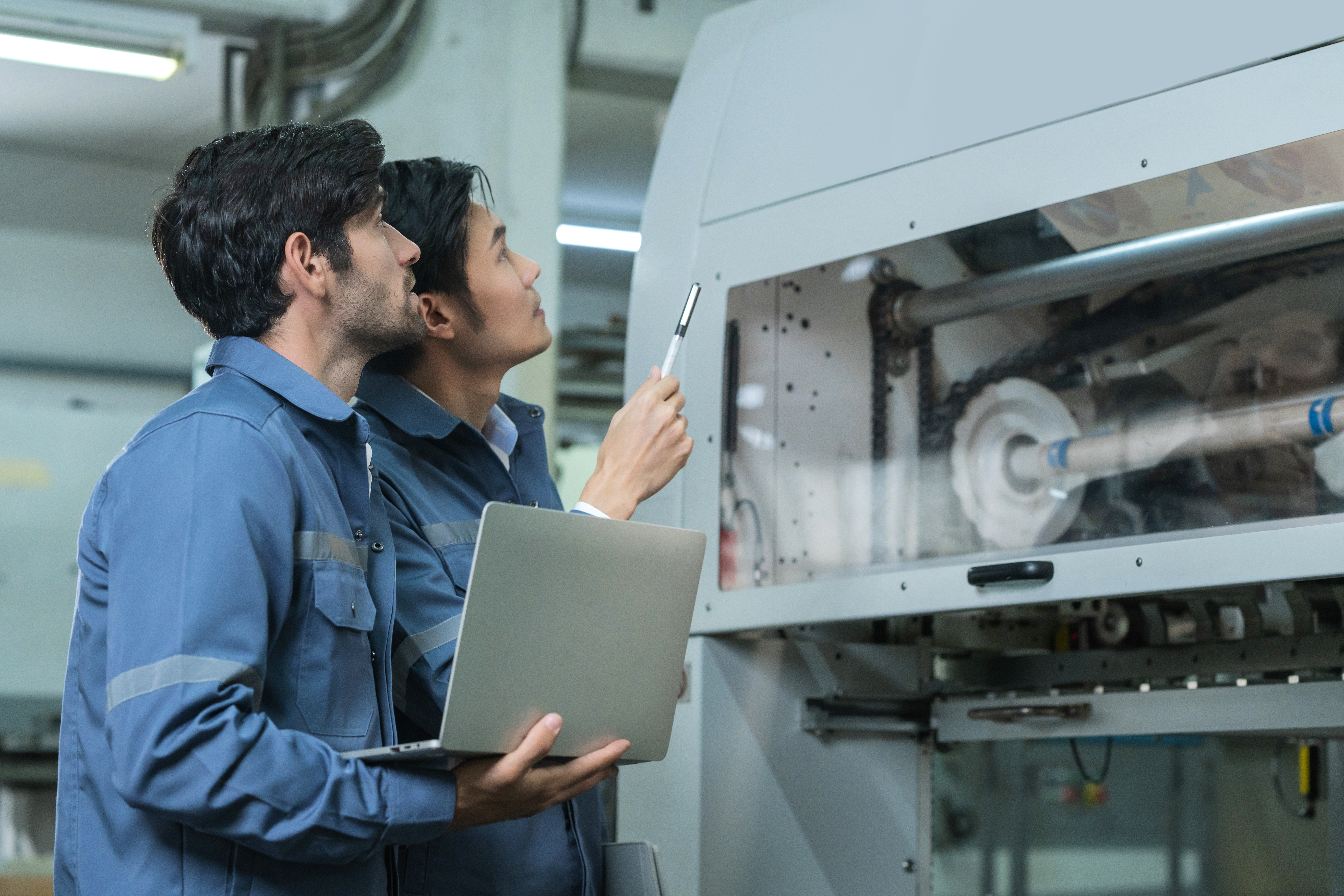Precision Air Conditioning
A Guide to Cooling Server Rooms or Data Centres for Safety
For high-performance data centres and server rooms, reliability depends on maintaining tightly regulated temperature and humidity using advanced cooling technologies. Overheating can threaten infrastructure uptime by accelerating hardware degradation inside these precision cooling systems when left unchecked.
This is where integrated CRAH systems and CRAC units are delivered by providing computer room air conditioning tailored to data centre needs. They sustain optimal indoor conditions by meticulously modulating temperature, airflow circulation, and moisture levels inside precision air conditioning for cooling server rooms and data centres.
This guide examines how these precision cooling systems continuously chill air intake and skillfully direct exhaust evacuation and circulation. This maintains near-flawless thermal stability for dependable long-term operations. We’ll also explore maintenance best practices to ensure server room aircon, precision cooling equipment, and all data centre cooling solutions perform at their peak.
Whether upgrading existing infrastructure or designing new solutions from the ground up, let’s begin exploring techniques for delivering assured uptime through environmentally conditioned precision within precision air conditioning for data centres.
How Server Rooms or Data Centres Maintain Optimal Environments – The Mechanics
Today’s powerhouse data centres densely aggregate thousands of servers, generating tremendous thermal loads. This internal heat could overwhelm infrastructure and threaten optimum performance if left unchecked.
Enter CRAC and CRAH systems, the conductors of environmental stability. Operating seamlessly 24/7, these precision-engineered solutions relentlessly optimise conditions like temperature, humidity, and airflow circulation to satisfy ASHRAE’s guidelines for humane and high-performing conditions fully.
CRAC units take a hands-on approach, integrating sophisticated refrigerant coils to extract heat where servers feed it into the system directly. Meanwhile, CRAH sentries cool supply air from the grandstands before distributing it through ductwork like seasoned stage managers. Both applications combine to cool spaces preferentially.
But masterful environmental control demands more than cooling alone. Strategically routing airflow circuits is equally pivotal. Considerate features like hot aisle containment expertly shuttle chilled air straight into tech-scapes like aerial pit crews, fueling operational excellence. In parallel, warm exhaust smoothly flows offstage to awaiting CRAC/CRAH units for reconditioning.
This elegantly interwoven choreography, meticulously balanced via conductive engineering, allows the complex to perform at its highest potential around the clock. Infrastructure produces precisely tuned habitats where technology can push boundaries reliably and revolutionise.
Types of Computer Room Air Conditioning (CRAC) & CRAH Systems
The specific workload capacity and availability demands must be carefully considered when designing conditioning solutions. CRAC units generally power smaller spaces up to 200kW, utilising simple on/off compressor cycles. However, CRAH systems leverage more energy-efficient variable speed components better suited for more extensive infrastructures exceeding 200kW, needing stringent uptime assurances.
CRAC orchestrations reliably maintain basic environments but lack some of CRAH units’ nuanced modulation abilities. CRAH sentinels utilise intelligently controlled fans capable of adjusting airflow microscopically based on need. This precision optimises energy extraction from every kilowatt of cooling capacity. For spaces requiring 99.99% availability or hosting rapidly developing internal loads, a CRAH infrastructure better aligns capabilities.
New on the scene are cutting-edge liquid cooling methodologies providing extreme density chill without traditional refrigerants’ environmental impacts or maintenance requirements. Using non-conductive liquids and micro-scale heat exchangers, these systems support ultra-dense configurations that standard air-based options cannot reach. While initial costs remain higher, their operational efficiencies and long lifecycles justify investments with stringent footprints.
Considering capacity, availability needs, and future density objectives, your Citec engineer consultants can design the most synergistic solution, ensuring reliable thermal management for years. Our goal remains to balance capabilities, efficiencies, and project scopes to optimise the climatic support of all operations.
Potential Hazards of Neglecting Proper Air Conditioning in Data Centres and Server Rooms
Data centres and server rooms require precisely moderated environments to guard against issues threatening infrastructure reliability. Without judicious controls, overheating poses risks like accelerated component degradation, electrical faults, and, in extreme cases, dangerous fires. Excess humidity fosters corrosion that can potentially damage sensitive electronics.
One of the most significant yet stealthy risks is excess water appearing where it has no business. Even minuscule chiller leaks or condensation line breaks could inundate server racks, triggering catastrophic failure and drawn-out outages. Thorough monitoring has become indispensable.
Modern sensor systems employ strategically situated moisture detectors that diligently test for the slightest hint of water, like canine sentinels. Sensitive cable probes under raised floors or above drop ceilings form precise detection grids. Prompt alerts immediately summon facilities personnel to address nascent issues before serious injury occurs.
Complementing sensors, video observation integrates for remote visual verification. Early detection through these automated protectors minimises costly downtime and repairs versus finding extensive damage already done. Tailored sensor placement and routine testing ensure robust defence for infrastructure relied upon for critical orchestrations.
By diligently maintaining environments through such vigilant monitoring allies, facilities engineers affirm resilient operations and assure reliability for all functions depending on sensitive technology. Continuous protection upholds performance excellence.
The Advantages of Investing in Data Centres or Server Rooms Aircon
For organisations relying on data centres and server rooms to power vital missions, ensuring continuous, flawless operations ranks among top priorities. While upfront costs may seem steep, strategically investing in sophisticated cooling infrastructure delivers abundant benefits.
Redundant, fault-tolerant chilling plants and intelligent automation provide the ultimate peace of mind against unexpected incidents or demand surges. Meanwhile, energy-efficient CRAC technologies minimise energy bills and environmental impact in the long term.
Where things get genuinely intriguing are intelligent systems dynamically optimising airflows based on ever-fluctuating thermal loads. This precision allows servers to excel to their fullest potential without overheating. It’s like a high-performance tune-up for your facilities!
Another worthwhile option is enlisting experienced colocation firms. They assume responsibilities by maintaining gargantuan, centralised cooling infrastructures leveraging economies of scale so your team can entirely focus on core missions. Reliable uptime assurance, energy savings, peak performance yields and lowered maintenance burdens – sophisticated climate stewardship strategies’ advantages justify strategic investments for mission-critical habitats. Overall, optimised environments empower digital orchestrations for years to come!
Best Practices for Maintaining and Upgrading Air Conditioning Systems in Data Centres or Server Rooms
Diligent preventive maintenance is essential to sustain optimised operations for decades. Facilities teams conduct thorough monthly checks, including carefully vacuuming filters to remove fine dust buildups. They also use specialised refrigerant monitoring tools to test charge levels precisely for subtle fluctuations. Catching minor issues at this early stage prevents potential shutdowns down the line.
An essential practice is performing detailed quarterly infrared scans of the entire cooling infrastructure. Thermal cameras reveal temperature variances across fan blades, ductwork, and electrical joints with engineering-grade precision. Any hotspots identified through these scans trigger targeted air balancing fixes or capacity upgrades planned well in advance as computing densities rapidly change.
Sophisticated monitoring systems provide around-the-clock vigilance, detecting maintenance requirements like precise filter replacement timings. They alert facility managers with sufficient lead time to schedule tasks during low-impact downtimes, seamlessly avoiding undesirable outages.
Periodic performance reviews consider optimisation technologies appropriate for each system’s specific era, such as revolutionary variable refrigerant flow methods or innovative rear-door heat exchangers. Such targeted retrofits breathe new life into mature assets, sustaining optimal energy efficiency as demands evolve unpredictably over decades of continuous operation.
Data centre operators extract maximum value from cooling infrastructures for their entire lifestyle through diligently performed preventive maintenance, proactive equipment evaluation and strategic refreshes. This assurance of reliable operations supports critical business functions seamlessly for many productive years.
Leveraging Expertise for Customised Support
While diligent maintenance sustains optimised operations, guidance from industry pioneers offers invaluable support when navigating complex cooling challenges. Whether evolving existing architectures or launching innovative facilities, partnering with accredited advisors helps maximise resilience and opportunities for innovation.
Seasoned professionals possess deep insights into critical considerations like evolving power needs, redundancy planning, regulatory compliance, and budget forecasting—all gained through decades of real-world experience supporting mission-critical ecosystems worldwide. Their certified engineers remain at the forefront of emerging technologies through continuous education.
Expert consultants thoroughly analyse your unique priorities, workloads, and infrastructure landscapes to craft customised roadmaps that address present requirements and tomorrow’s uncertainties. Through open collaboration and long-term accountability, optimal performance is reliably sustained.
Leveraging the strategic vision of industry leaders allows focusing internally on core objectives with confidence. As innovators passionate about creating energy-efficient, economic, and regulatory-aligned outcomes, our climate orchestrations are carefully synchronised to power your transformations dependably for many productive years ahead.
Consult our team to discuss future-proof cooling strategies to maximise the long-term success of your environmentally controlled habitats. Strategic foresight, customised guidance, and ongoing support are the pathways to sustained progress—fueling your resilience and growth opportunities.
Citec International Has Reliable Cooling Solutions to Meet All Your Needs
In conclusion, Citec International stands ready to help your precision cooling needs with decades of experience designing, installing and maintaining first-class infrastructure solutions. Whether you require a new CRAC or CRAH system deployment, 24/7 monitoring of an existing data centre cooling system, or upgrades to integrate the latest CRAC technologies, our experts deliver unmatched service.
As the industry leader in precision air conditioning for data centres and computer rooms, we employ only the most rigorous preventative maintenance best practices to ensure your CRAH systems, precision cooling equipment, and server room air conditioners run at peak efficiency. Our technicians use specialised tools to conduct thermal scans, refrigerant charge checks, filter changes, and sensor calibrations.
When it comes time for replacements, we can evaluate your needs to select the ideal precision air conditioning for server rooms. This may include new CRAC units featuring variable speed components or contactless controls. And through ongoing tune-ups, we work to maximise the lifespan of your investment in data centre cooling.
With a dedicated team of HVAC engineers proficient in modern precision cooling system technologies, Citec International can optimise your mission-critical environments for performance. Rely on us for all your data centre cooling, computer room air conditioning, and server room air conditioning requirements.




